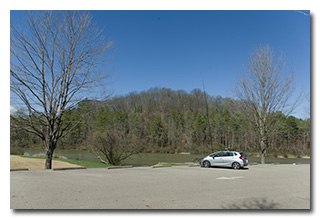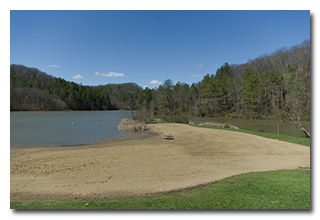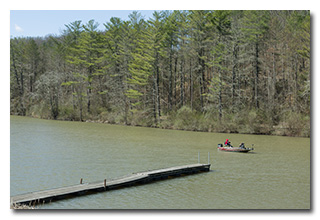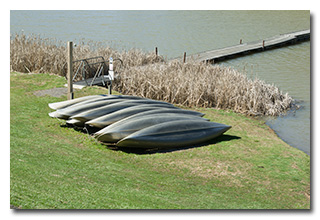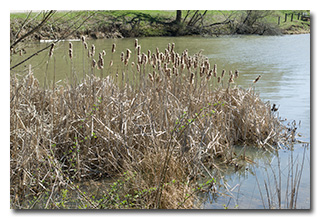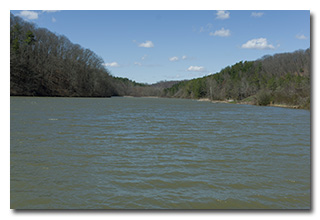
by William Eric McFadden
From the Strouds Run State Park website:
-
Several mounds and ancient fortifications were found in this area by early settlers telling us that the Adena Indians once lived here. In more recent history, this was home to the powerful Shawnee Nation until the Treaty of Greenville forced them to abandon their lands in southern Ohio.
The first European settlers arrived in the Athens County region in 1796. Two townships of land in the area had been apportioned by the Ohio Company in 1795 for the benefit of a university. The newly arrived pioneers were encouraged to settle on these college lands so as to make them attractive, productive and to form a fund for the institution.
This venture led to the founding of the town of Athens and Ohio University, the first college in the Northwest Territory. Settlers came by way of flatboats from Marietta down the Ohio and up the Hocking River to an attractive bluff where the town of Athens is now located.
With the discovery of rich coal fields in the area, Athens County soon developed into one of the leading coal producers in the state. The Hocking Canal and railroads provided easy means for shipping coal to distant markets. Clay tile, brick and salt were other industries that brought prosperity to the area.
The park derives its name from the Strouds family who settled in the area in the early 1800s. The land was purchased by the state for forest conservation purposes from 1948 to 1953. The dam creating Dow Lake was completed in 1960. The lake bears the name of C.L. Dow of Ohio University who was instrumental in initiating the project.
Pictures
Description
On Sunday, March 17, 2024, one member of the Southeast Ohio Radio Adventure Team performed a successful activation of Strouds Run State Park (K-1994) as part of the Parks on the Air (POTA; link) program.
On a warm but exceedingly blustery morning, Eric McFadden, WD8RIF, visited the swim-beach area in Strouds Run State Park. He was accompanied by the small dogs Theo and Ginny.
Eric arrived at the swim-beach area at 1450 UTC with the intention of setting up his Elecraft KX3 transceiver and AX1/AXE1 portable antenna system on an available picnic table. However, while he was walking Theo and Ginny, he realized that while it was otherwise warm enough to comfortably operate outdoors, the winds—which he learned later were gusting to 28 mph—and the resulting wind-chill ruled out operating on an exposed picnic table. Instead, Eric chose to operate within the shelter of his car, deploying his 28½' wire vertical on a 31' Jackite telescoping fiberglass mast held upright by a drive-on base, arranging three 17' counterpoise wires on the ground around the car, and mounting his Elecraft KX3 on the passenger-side dashboard. Eric was on the air at 1509 UTC.
As expected, Eric found he had good cell-signal at this location and he would be able to spot himself on the POTA Spots website (link) and to use POTA Spots to identify possible Park-to-Park (P2P) QSOs.
Beginning his operation on 20m, Eric found himself a clear frequency to run, began calling "CQ POTA", and was auto-spotted on POTA Spots. His first QSO came at 1511 UTC with AC0DK in Wisconsin. QSOs came increasingly slowly, with Eric's seventh QSO coming at 1519 UTC with K1VP in New Hampshire. This run included QSOs with operators located in Wisconsin (2), Maine, Washington, Arkansas, Idaho, and New Hampshire.
Pausing to check POTA Spots for possible P2P QSOs, at 1524 UTC Eric completed a P2P QSO on 20m with WS4Y at Fred Gannon Rocky Bayou State Park (K-1873) in Florida, and at 1526 UTC he completed a P2P QSO on 20m with N1BS at Goddard Memorial State Park (K-2876) in Rhode Island. After this, Eric resumed calling "CQ POTA" and at 1530 UTC he completed a QSO with W2NR in New Hampshire.
Switching to 40m, Eric found a clear frequency to run, began calling "CQ POTA, and was again auto-spotted on POTA Spots. His first QSO in this run came at 1534 UTC with K9IS in Wisconsin, his second came at 1538 UTC with W8ATE in Michigan, and his third came at 1540 UTC with KX9DX in Indiana.
Pausing again to check POTA Spots for P2P QSO opportunities, at 1544 UTC Eric completed a P2P QSO in 20m with AB9CA at Foss State Park (K-2780) in Oklahoma, at 1548 UTC he completed a P2P QSO in 30m with K7MWA at Delaware Water Gap National Recreation Area (K-3379) in Pennsylvania, and at 1553 UTC he completed a P2P QSO on 20m with WJ5K at Tombigbee State Park (K-2553) in Mississippi.
Seeing that 30m appeared to be productive, Eric found himself a clear frequency on that band to run, began calling "CQ POTA", and was auto-spotted on POTA Spots. His first QSO in this run came at 1602 UTC with WB0CJB in Tennessee. QSOs came steadily, with Eric's sixth QSO in this run coming at 1607 UTC with W4TRA in North Carolina. This run included QSOs with operators located in Tennessee (3), Indiana, New York, and North Carolina.
Eric finished his activation by once again checking POTA Spots for P2P QSO opportunities. At 1613 UTC, he completed a P2P QSO on 20m with N0GRP who was performing a three-fer activation of California National Historic Trail (K-4566), Oregon National Historic Trail (K-4576), and Santa Fe National Historic Trail (K-4579) in Missouri. This was followed at 1617 UTC by a P2P QSO on 20m with KD9UDV who was performing a five-fer activation of Historic Washington State Park (K-1106), Trail of Tears National Historic Trail (K-3791), Southwest Trail State Trail (K-7436), Civil War Trail State Trail (K-7435), and Camden Expedition Scenic Highway State Trail (K-9681) in Arkansas.
In all, Eric logged twenty-nine QSOs, with twelve P2P QSOs, in a bit over an hour of operating time. All of Eric's QSOs were CW and were made at five watts output.
During his operation, some of the wind gusts were strong enough to buffet his car, and the Jackite 31' telescoping fiberglass mast was really taking a beating. Eric wouldn't have been surprised if the mast had collapsed or even broken, but it remained fully extended and upright despite the strong wind gusts.
After station tear-down, Eric again walked the small dogs.
A few minutes later, Eric and the dogs were joined by Eric's wife, Vickie, and their grandson Archer, and they drove a short distance to the somewhat-protected Lakeview Shelter for a picnic.
Eric also submitted his log to the World Wide Flora and Fauna in Amateur Radio (WWFF; link) program for an operation at Strouds Run State Park, KFF-1994.
(return)
